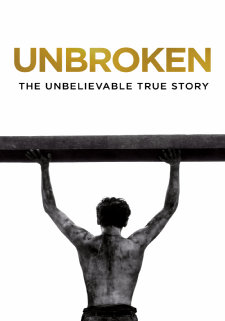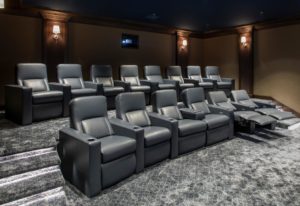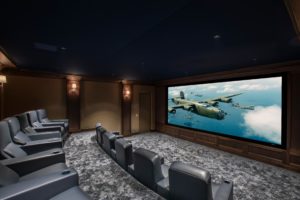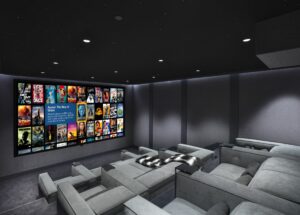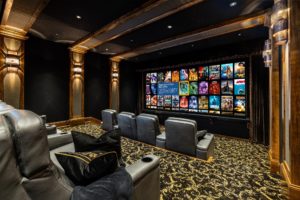Unleashing the Emotion of Unbroken
Kaleidescape Curator Notes
While grapevines easily thrive in fertile soil, producing abundant bunches of fruit, the resulting wine is typically weak in flavor and lacking in longevity. But plant vines in a difficult environment, like steep rocky hillsides, and their roots will dig deep to find sustenance. Fewer grapes will be grown, but the ones that survive reward you with an intensely flavorful wine with the stamina to age for decades.
This analogy was front of mind when watching Unbroken on Kaleidescape, a 2014 film directed by Angelina Jolie and written by Joel and Ethan Coen, Richard LaGravenese and William Nicholson. The movie follows the true story of American Army officer Louis “Louie” Zamperini (played by Jack O’Connell), an Olympic track star and WWII airman who survived 47 days as a castaway and years in Japanese prisoner of war camps. The movie is based on the book Unbroken: A World War II Story of Survival, Resilience, and Redemption by Laura Hillenbrand.
Preferred Pairing: Aged Merlot, from the Napa hillside. Merlot was declared “dead” by many after the varietal was slammed in the movie Sideways (also available on Kaleidescape). But this grape remains the star of Bordeaux’s right bank and the headliner of many of Napa’s most cherished wines for good reason: battling through its environment and aged appropriately, Merlot stuns with its beauty and intensity more than a decade after bottling. It’s the perfect pairing for Unbroken.
When to Consume: Anytime you are feeling stressed out and think you have a tough time, just watch Unbroken. As the title screen appears, open a bottle of aged Merlot and witness the changes in the wine over the next two hours as it breathes. You’ll be surprised at the evolution of the wine – and the movie’s main character – over the course of the movie.
Body of Work
Unbroken provides several demo scenes. Prepare to be launched into the cockpit of a World War II bombardier mid battle, dropped onto a storm-tossed raft at sea, and hurled into a track race during the Olympic games. The pristine cinematography and precise location-based Dolby Atmos sound will transport you to these thrilling, and chilling, scenes.
The movie alternates timelines in Zamperini’s life, from his trouble-seeking childhood to his teenage years as a track star. We follow Zamperini through bombing raids, failed rescue missions, and prison camps. The time hops enliven the movie’s pace in many places that could have languished, just as Zamperini does for days on end in the Pacific.
We meet the movie’s antagonist and Zamperini’s nemesis, Mutsuhiro Watanabe (played by Japanese guitarist Miyavi), when Zamperini arrives at the Omori POW camp. Watanabe, a war criminal, mercilessly beats Zamperini for making eye contact, and then constantly seeks out opportunities to punish and embarrass the former Olympian during their time together.
Few lines in movie history are as harrowing and delivered with such deliberate gleeful pleasure, as Watanabe’s declaration to new prisoners that, “You are enemies of Japan. You will be treated accordingly.”
The cinematography and sound of Unbroken are wonderful studies in contrast. In one scene, Zamperini is in Torrance, California, competing in a high school track meet. Individual voices in a sparse crowd can be heard calling out encouragement. A few years later, Zamperini walks into the 100,000-seat track and field stadium in Berlin, Germany during the 1936 Summer Olympic Games, surrounded by throngs of wildly screaming spectators.
Viewers accompany Zamperini inside the cramped and cacophonous cavity of a bombardier B-24 Liberator during an air battle as he is overwhelmed by the sound and fury of bullets piercing both the plane and its crew, desperately returning rapid machine gun fire at attacking fighters.
Shortly after, we are adrift with Zamperini in the vast Pacific Ocean, the silence punctuated only by the whispers of the raft’s weakened inhabitants. We see starving, soot-covered POWs shoveling coal, and a well-dressed, sophisticated crowd dining in the bustling Tokyo city center.
The torture Zamperini endures during his time as a prisoner of war is challenging to watch, and it is difficult to understand how he survived such an ordeal in real life. But Zamperini isn’t presented as an unflinching, emotionless hero. We see his moments of mental anguish. There are times he wants to give up. That’s when Zamperini remembers the words of his brother, offered when Zamperini was turning away from crime and toward his running career: “If I can take it, I can make it.” He takes the pain but prevails.
We witness Zamperini outlast each excruciating blow and emerge unbroken in the end.
“Angelina Jolie, the film’s director, gave us an emotional road map for what Louis should be experiencing during his journey.”
ANDREW DECRISTAFARO
Tasting Notes
Like fine wine, there are always moments that shine in a movie, scenes that stand out in our A/V sensory palate. For Unbroken we asked Ron Rouse, VP Sales of Wisdom Audio and Doug Dushan, Business Development Manager of Echo Systems to share some dealer “demo notes” and personal insights. They often use the following scenes to showcase the latest A/V gear, ensuring the technology delivers an optimized performance.
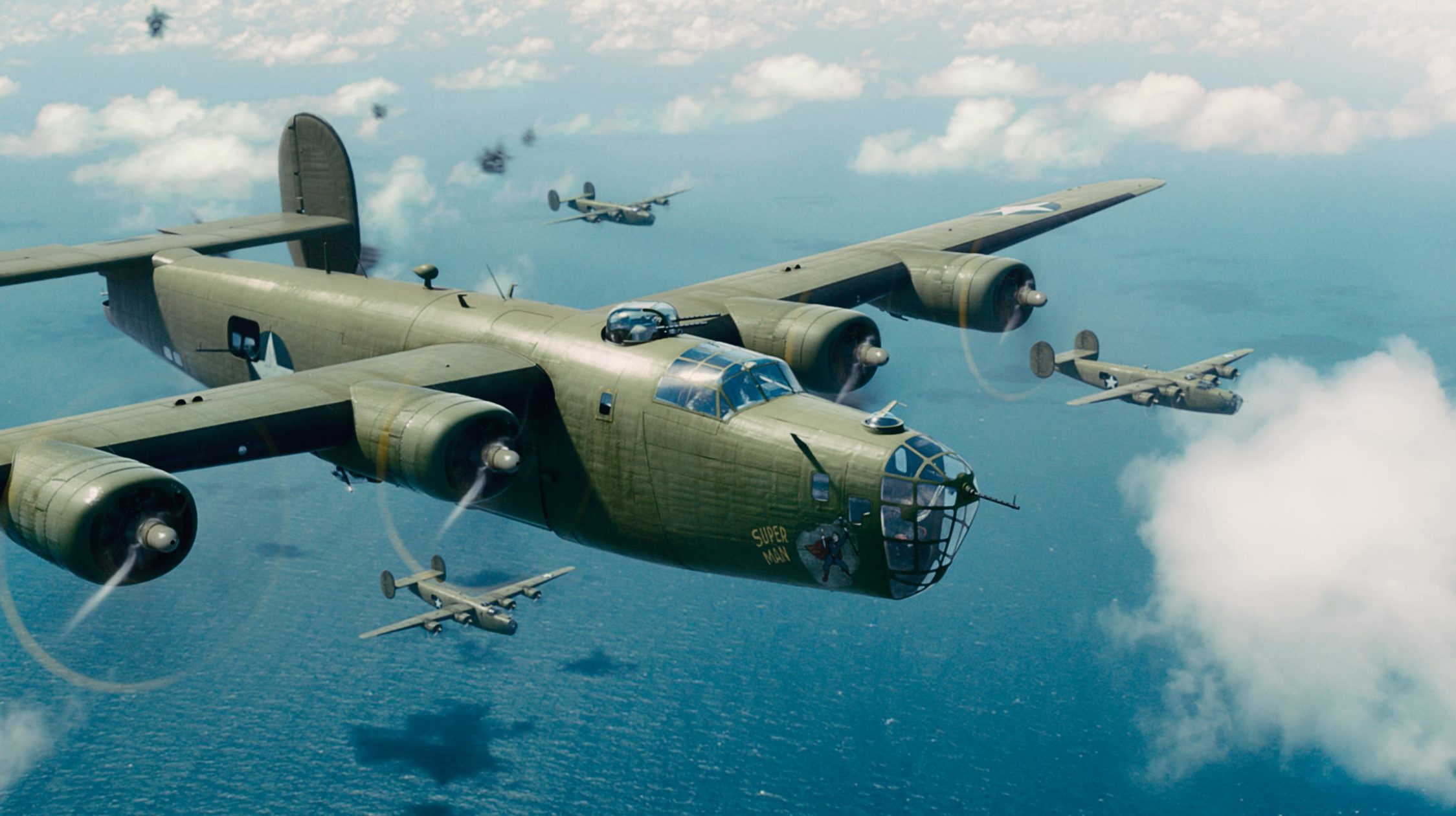
Bombing the Island: 00:00 – 06:36
A great rule to remember when selecting a movie scene that shows off the qualities of your private cinema is to consider the story. Besides having great sound and cinematography does it tell a story that transports you with a beginning, a middle and an end? The best ones cause us to forget ourselves in the process! This cut has it all, from the beginning of the track when, sans music by directors’ choice (to allow the realism center stage) a squadron of WWII B-24 Liberator Bombers appear out of the dawn horizon and roar over, around and by you.
You are thrown headfirst into the bomber and a well-tuned system will place you inside of the plane as though you are one of the crew members. The scene swings from almost intimate with subtle rattles, creaks, and voices all around to dynamic and intense. Through it all, the many different detailed sounds, from the levers, rattling and cockpit instruments, place you in the middle of the vintage bomber’s fuselage. Another scene-setting soundscape to notice is the movement of the sound from the Zero Fighter Planes attacking the Bomber. This will have you jumping out of your seat with the crew. Voice-matched screen, surround, and overhead loudspeakers will really pay off as those enemy fighters roar by. Such systems, engineered, installed, and calibrated properly enable the artist’s goal for you to be immersed into the flight and not “listening” to your speakers.
To savor the bass, take note of two experiences. First, the main aftershock of the bombing raid, which should produce a very realistic low-frequency rumble that is big but not over the top. Next, the .50 caliber machine cannon, ball turret mounted under the plane, will test your system’s ability to reproduce fast, tight bass reminiscent of a Metallica double bass drumbeat! Afterward, you might find yourself wiping your brow. Hopefully, you’re not canceling any flight plans soon. Well, maybe if it is an older prop plane!
“A good example of how we go from the director’s vision to finished product is the bombing run and subsequent dog fight depicted in the Unbroken opening sequences. When we first met with Angie, she told us that for the opening she wanted to hear the ‘sounds of war.’ She intentionally did not want score during the fighting sequences – the real sounds of the ‘war machine’ were to tell the entire story.”
ANDREW DECRISTAFARO
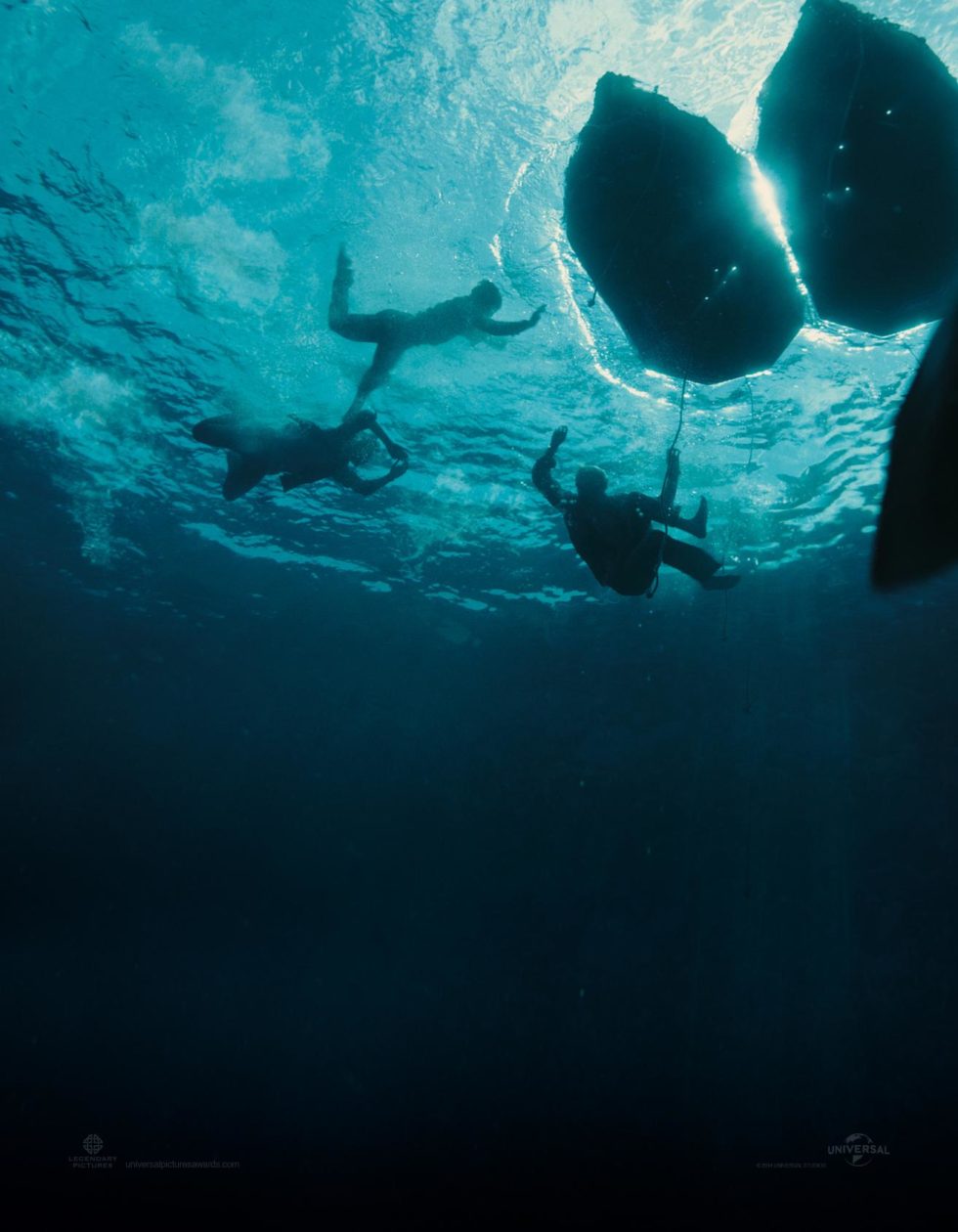
Crashed at Sea: (31:44–34:39)
The real magic of a high-performance home cinema lies in its ability to convey the emotions of a movie scene so that the viewer feels these emotions themselves. The visceral and emotional connection of this scene takes full advantage and depends on superb image resolution and dynamic range and a well-executed immersive audio system in order to convey the emotional connection that is the artist’s intent.
“Crashed at sea” serves up a heaping helping of anxiety! As the scene begins, a tremendous commotion surges from the back and through the World War II bomber as it impacts the surface of the ocean. Our adrenaline surges through us as if we truly experience this horrific plane crash. Suddenly, we are with Louis Zamparini, struggling to free himself as the water rushes in. The plane, in which the crew seemed so comfortable just a short time ago is now twisted metal pinning him down. The chaotic sounds of being inside a tin can are suddenly juxtaposed with the acoustic serenity of being submerged as the struggling actor sinks beneath the waves. Near surrender, something startles him into making one last successful effort. He races toward the surface, and we feel the desperation of holding a breath long past the point of comfort as the plane sink to its grave at the bottom of the ocean.
The singular blue expanse of deep ocean water fills the screen, and we are immersed with the soundscape of being deeply submerged. Zamperini bursts through the surface and it is once again calm. The surviving crew struggle into the life rafts. And in the final moments of the scene, the camera pans around 360° with water as far as the eye can see and an empty blue sky, the subtle sounds of water slapping against the floating debris.

First Encounter with Corporal Watanabe: (71:48-74:53)
The caliber of the video in your private cinema is crucial for this tense emotional scene. Zamperini encounters his old Olympic rival who turns out to be the cruel taskmaster of his new prison camp home. A closeup video of his youthful face reveals his unshaven face with the acne common to a young man. The sweat glistening on his skin provides for greater realism. The unforgiving sun beats on his face which glistens with sweat, and the video system brings you right into the formation of prisoners. As he lowers his eyes in fear, a shadow is cast from his eyelashes on his cheeks. The camera detail work is masterful and elegant. The audio in this scene is subtle but no less important. The silence is palpable, hearing only the wind and the shuffling of the other prisoners as they struggle to stand at attention.
Vintner’s View
Every exceptional wine review brings a little something extra to the table, be it personal insights from the master winemaker or the team of vintners who helped produce the final product. The artistry that goes into movie making deserves the same recognition. In this section of the review, we are calling upon, “film vintners” to bring some added texture to what went into creating the artistic flavors of the film.
For Unbroken, we asked supervising sound editor Andrew DeCristafaro, an Academy Award Nominee for Best Achievement in Sound Editing for Unbroken, to provide some artist insights.
As a Supervising Sound Editor, his job is to deliver the director’s sonic vision to film. Andrew oversees a team of editors, sound designers, foley artists, and many others to score the film sonically to tell the emotional journey of the characters. It really comes down to creating moods by knowing how humans react to certain frequencies. It’s like the way a composer orchestrates the score for emotional impact.
“Working on Unbroken was such an honor and a privilege. In telling the inspirational, true story of war hero Louis Zamperini, my team and I felt a tremendous obligation to do right by him. Angelina Jolie, the film’s director, gave us an emotional road map for what Louis should be experiencing during his journey. A good example of how we go from the director’s vision to the finished product is the bombing run and subsequent dog fight depicted in the Unbroken opening sequences. When we first met with Angie, she told us that for the opening she wanted to hear the ‘sounds of war.’ She intentionally did not want score during the fighting sequences – the real sounds of the ‘war machine’ were to tell the entire story.”
ANDREW DECRISTAFARO

Artist Insight
Working on Unbroken (2014) was such an honor and a privilege. In telling the inspirational, true story of war hero Louis Zamperini, my team and I felt a tremendous obligation to do right by him. Angelina Jolie, the film’s director, gave us an emotional road map for what Louis should be experiencing during his journey.
A good example of how we go from the director’s vision to the finished product is the bombing run and subsequent dog fight depicted in the Unbroken opening sequences. When we first met with Angie, she told us that for the opening she wanted to hear the “sounds of war.” She intentionally did not want to score during the fighting sequences – the real sounds of the “war machine” were to tell the entire story.
To ensure we conveyed those sounds as accurately as possible we teamed up with the Collings Foundation, a vintage aircraft “living history” organization, to record their B-24J Liberator, Witchcraft, one of only thirteen remaining, airworthy B-24s. It has been restored by the Foundation to its original condition. The Foundation gave us unlimited access to all parts of the plane. While on the ground, we recorded every switch, hydraulic system, electric motor, hatch, latch, and ladder we could find.
We had a crew on the runways recording exterior takeoffs and landings. For in-flight recordings, we placed microphones in every conceivable location to capture all the sounds Louis and his crew would have experienced. This enabled us to convey each location in the plane sonically so that during the film, as Louis moves through the plane, the audience sonically moves through the plane with him. On a personal level, flying in that plane, one realizes that B-24s were not built for comfort! It was loud, cold, windy, uncomfortable, and powerful! It was an awesome, once-in-a-lifetime experience.
Other than some production dialogue, everything you hear during the opening bombing and dogfight sequence of Unbroken was created in post-production, after the fact. The key to taking the sound we recorded or created and building a busy action scene like the bombing run is articulation. There is a fine line between being impactful and having so many things playing at once that the track becomes cacophonous noise.
In much the same way as the Director of Photography uses depth of field to direct the viewers’ attention in the visual image, the Supervising Sound Editor does the same thing with sound by asking, “Where do I want the viewer’s attention focused right now?” Those sounds take front and center, and others recede or even fade away completely so as not to obscure our focus. Of course, this is a constantly moving sonic depth of field.
When watching this sequence, listen for subtle things like the rear gunner kissing his fingers and touching a photo of his loved one, and the way unique sonic signatures attached to each location in the B24 can be heard as the camera visits each character. Also notice how we direct the viewer’s attention to what sonically comes into focus, then fade away to draw attention to the next important item.
I love the sequence of the 50-caliber machine gun firing away as zeros fly by, with the sound of the empty shells ejecting and falling on the floor. There is so much going on in this one shot, yet all the detail can still be heard. Our hope is that the end result is an opening sequence that conveys the vision of Unbroken‘s director and, in some small measure, does justice to what Louis and his brave crewmates experienced.
The sequence where Louis and the crew are stranded at sea for 47 days is a great example of the amount of work and detail that went into Unbroken. Angie had initially started filming these scenes in the ocean, but it became clear very quickly that filming in an uncontrolled environment as the ocean was very challenging and would push the production into huge overages. She decided it would be better if they filmed in a large water tank. Unfortunately for us, that water tank was near a major highway as well as an amusement park!
Angie wanted to feel the loneliness and isolation that Louis and his crew felt in the middle of the ocean. Visually you could alter it to look like we wanted, but we ultimately had to re-record every line of dialogue from scratch. I believe we kept one yell from production, but that entire sequence is 99.5% sonically reconstructed from scratch.
As for the amount of detail that goes into something like this and items to listen for…. when the raft is first deployed, it is clean, fully inflated, taught. But as time progresses, its texture becomes encrusted with salt, deflated much as our characters are as they lose all hope of ever being rescued. Those subtle clues help tell the story sonically and emotionally.
On a lesser system, these details are lost. Sure, the story is conveyed, but the emotion is not nearly as impactful as when you are immersed both visually and sonically.
To record all the dialogue from scratch it took longer than usual to get authentic recordings and performances. These are very nuanced things. Becky Sullivan, my supervising sound editor partner, is the best at working with actors. She had them laying in the ADR stage with pillows to get the same body position as when they were in the raft. Becky had the lights dimmed, asked them not to drink water so that they would get that dry mouth sound, and she would help them get back to that place emotionally so that the performances were real.
For isolation, we did some recordings in various water locations that were remote. Some lakes, ocean, etc. where we would put our recorders in a raft adrift about 100 feet behind us and just sit in some isolated locations to get some wind, water laps, still air, etc.… to help sell that we were alone at sea.
From the production recordings where you could still hear 18-wheel trucks, the steady highway traffic, the joyful screams of people enjoying the distant amusement park roller coasters to the final sonic piece was a long and meticulous journey but it was worth it to tell the emotional journey for Louis Zamperini.
